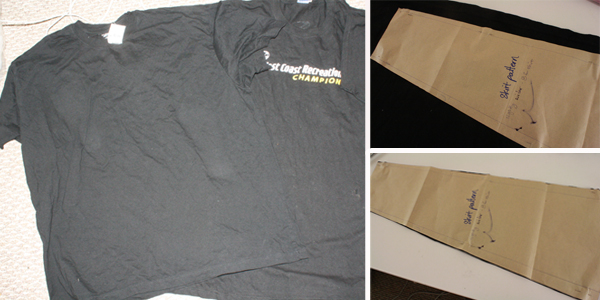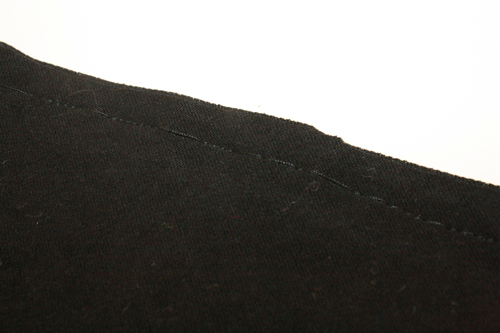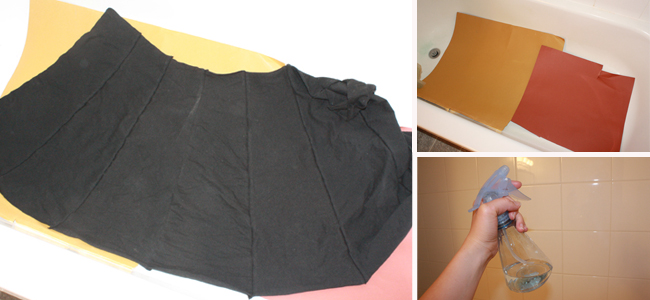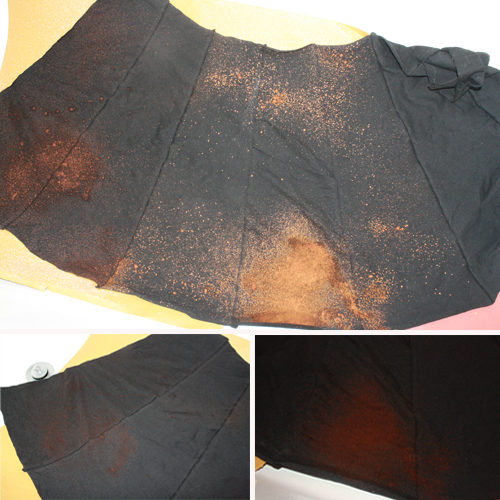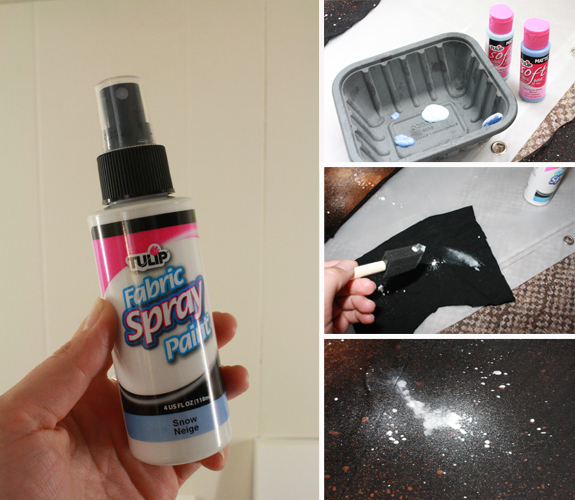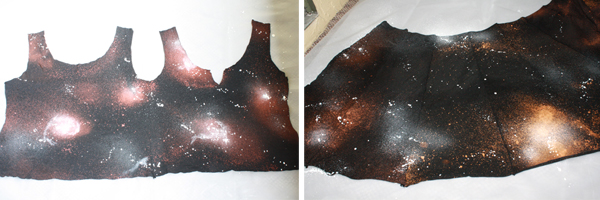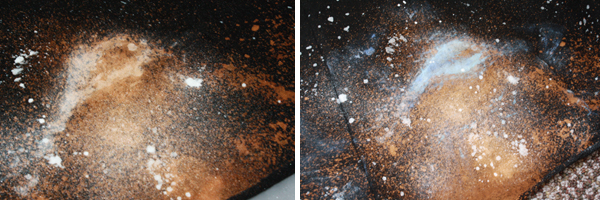We all like to pretend a lot of things about ourselves. Like that we never get morning breath, are always likeable, don’t sweat (or don’t smell funky when we do), always know what we’re doing, meant for it to happen that way, and OMG totally didn’t see that email, so sorry (but actually just didn’t feel like answering it right that minute, and then we forgot, and then we felt bad about it & so ignored it, and then forgot again). Um.
One of the things I like to pretend (besides all of the above, obviously), is that when it comes to crafting I totally know what I’m doing and look at this magically perfect thing I made and isn’t everything just grand and peachy? You always get to see how stuff ends up (when it ends up well), but it’s less frequent that I share the details of just how much went wrong and had to be ditched, redone, fixed or fiddled with along the way. I think I’ve finished two sewing projects in my entire life that didn’t require any picking out of stitches.
So today, we’re going to walk through the beginnings of a project together, to see what everything looks like before it’s done and put together, neatly photographed and looking lovely. And see what issues we encounter along the way. Because a project without an issue is a rarity indeed, and usually has me looking over my shoulder wondering when and how the world is gonna make me pay for it.
This particular project is a galaxy dress, which I plan to wear at PAX in a few weeks. I’m not a cosplay type person (too much hassle to wear/sweat in/carry those costumes and props around at a convention, though I love looking at other people’s cosplays!), but I like getting dressed up in other ways, wearing something that’s a little different from the everyday, or at least incorporates an especially appropriate theme. Like wearing that octopus fascinator to the Calgary Comic Con. Small, simple, easy to pack and easy to wear, but just a little something to make me stand out and feel like I’m doing something different. PAX is a great occasion for this kind of halfway dress-up. Some years I have made things specifically to wear to PAX, other years it’s been just a matter of selecting which particularly geeky dresses or shirts I’m going to wear that weekend. This year, one thing I’d like to wear is a galaxy dress – a black dress scattered with imaginary star systems and timey whimey spacey stuff. I was inspired by making the galaxy tablecloth for our Doctor Who party a few weeks ago, thinking it would make great material for a dress. But there wasn’t quite enough of the tablecloth for the kind of dress I wanted to do, and there were some things I didn’t get quite right that time that I wanted to fix for a dress.
So first, I bought t-shirts for this dress. Because I like making things from t-shirts, and I’m not spending $40 on fabric for a dress I won’t be wearing weekly. Instead, I spent $6 on a couple of 3 XL black men’s t-shirts from the thrift store.
Note: These t-shirts are made of two slightly different materials, which is going to come back and bight me in the ass later. Didn’t worry much about it initially, which was foolish. But that’s exactly the kind of whoops, solution-finding process I go through all the time with projects – it’s part of the fun.
And then I cut them up. It’s fun. If you haven’t already, you should check out some of my other posts about the terror and satisfaction of chopping up a garment to make it something new. I already had skirt and top patterns I’ve made for other projects, that I could mix and match and modify for this dress.
I wanted to piece things together before the bleaching/painting processes, because that way the different pieces would have one continuous pattern going across them, as opposed to if I bleached and painted the material and then cut out and pieced together the pattern pieces. So I started by cutting out all the skirt pieces (8 wedges) and began sewing them together. And that’s where I encountered…
Problem #1: Skipped stitches. I’ve been having this problem off and on a lot lately, whenever I’m sewing a particular type of knit (specifically very stretchy or thin ones – bamboo cotton has been an utter nightmare for this). I’ve tried using ball point needles (good for knits and stretch fabrics), I’ve tried adjusting the tension to every possible setting. Sometimes these things help, sometimes (like now) they do bugger all. If you look at the picture below, you can see what I mean, and it was especially bad with this fabric.
Seriousness of problem: (Technical rating) GAH! ARGH! (In-English rating) Very – solution/fix absolutely required, or the skirt will have funny gaps in the seams and basically be a wreck, and also not very strong.
Solution 1: Mess with tension
- Result: Doesn’t help.
Solution 2: Rethread machine.
- Result: Doesn’t help.
Solution 3: Pull the fabric a little more taught as it’s going through the machine, plus go back over each line of stitching a second time so that at least the skipped stitches aren’t in the same place both times.
- Result: Works well enough for this project.
I didn’t quite sew the entire skirt together, though. I wanted to bleach it flat, so I wouldn’t have to worry about bleach soaking through to the other side. So I left the final seam unsewn, for a flat, outspread skirt piece like this:
Then I took the whole thing to the bathtub, where I laid down some large and fairly thick sheets of paper. (Newspaper would probably do as well, or an old towel.) Even if you’re not worried about getting bleach on the surface underneath, you want something fibrous beneath your fabric, something that will soak up the excess bleach. Otherwise, as I’ve discovered in past experiments, the bleach it can spread across the smooth surface below and be soaked up through the back of the shirt, messing with your design. And of course I got my handy spray bottle, which contained a mixture of bleach and water (approximately 50/50, percentage-wise).
Then I started spraying. Something I learned from the tablecloth experiment was to go light on the bleach. I went too heavy on the tablecloth and got a lot of drips and junk that didn’t look so galaxy-like. So I flipped it (the fabric was quite thick in that instance and the bleach hadn’t gone all the way through), and tried again on the other side. Better. But this time I wanted to improve even more on that.
I also realized with the tablecloth (afterwards, of course) that I wanted more blank black space in between the bleached bits, so this time I went lighter with the bleach. You can always add more, but you can’t remove what you’ve already put down.
One of the keys with bleaching is that often at first it doesn’t look like anything is happening. Just. Wait. Give it time – you can always go back and add more bleach. I’ve gotten into trouble before adding too much more bleach too quickly, and ending up with a much more heavily bleached area than I wanted. Let it sit for a few minutes, then come back and check up on it and see what’s happening.
Problem 2: the two different t-shirt materials are turned two different colours by the bleach. One is a very bright peachy pink, and one is much darker and red toned.
Seriousness of problem: (Technical rating) Huh. Whoops. Meh. (In-English rating) This is not helpful, but it can be dealt with, and it probably won’t be that noticeable on the finished dress.
Then it’s off to make the top part of the dress (with a little bleach test on one corner, to establish that it bleaches the same way as at least one of the t-shirts that makes up the skirt, because we don’t need three different bleach colours going on here), and that’s where we run into:
(The Return Of) Problem #1: Skipped stitches. Except now it’s not skipping stitches, it’s straight up refusing to put a single stitch through the #%*!#$*ed@#*%ing fabric. I have never seen or had this happen before. What. The. Hell.
Seriousness of problem: (Technical rating) AAAAAAAAAGGGGH!!! (In-English rating) I am going to take this machine and beat it to pulp with with *looks around for heavy object in lieu of a baseball bat, which we don’t own* this toaster oven!!!
Solution 1: Repeat all previous solutions (messing with tension, rethreading machine, looking for anything else on machine to adjust, stretching fabric slightly).
- Result: Doesn’t help. I try sewing on other fabrics, though, and that works fine.
Solution 2: Flip out.
- Result: Doesn’t help. Doesn’t even make me feel better.
Solution 3: Call my mother, who is attempting to relax with a glass of scotch with the grandparents, but instead gets to listen to me yell about all the things I am going to do to this damn machine, because this is what it is to be a parent, even when your kid is 27 years old.
- Result: She has never had this happen either, but she and my grandma suggest that I a)look in the machine’s manual for help, b)adjust the feed dogs, c)call the sewing machine store in the morning d)clean the machine.
- Result of that: I ignore a) as a last ditch effort, can’t figure out how to do b) because I don’t think there is a switch for adjusting the feed dogs, can’t do d) right now because it’s 10pm and they won’t be open, but really ought to call them in the morning (but of course, don’t), so start with c), which I acknowledge I ought to do way more often anyway, but it’s a pain and I am lazy.
- Results of that: Cleaning the machine does help, in the end, and while I’m doing that I notice a dial on the side that I’ve never paid attention to before, that indicates that it adjusts the feed dogs (those are the little teeth things under the presserfoot that pull the fabric along). So I fiddle with that a bit for good measure. It results in my being able to sew the fabric reasonably well, so I double stitch all the seams for good measure and call it fine for now. And resolve to call the sewing machine store soon, and have a look at the manual (of course I still haven’t actually done either).
And once that little adventure is over with, I go to bed.
The next day I bleach the top part of the dress…
…then continue with galaxy creation, which involves:
The beautiful thing that is (white) fabric paint in a spray bottle, a sponge brush, some blue fabric paint not in spray bottles, scrap fabric for experimenting on, and general mess and splatter. Wheeee!
I start by doing the white on both the top and skirt pieces. Lots of spray, some more misty and light, some more concentrated and blobby. I especially dump white paint in the middle of any large bleach spots.
This is also where I really tried to fix that Problem #2, where the two colours of bleach on two side-by-side panels of fabric aren’t quite the same colour. By dumping white paint right over the seam in the spots where the bleached areas match up the most, I managed to hide the colour change enough that probably no one will notice unless they’re really looking for it.
Then, using, the sponge brush, I dab bits of light and mid-range blue on various areas, making dots and spots and light, brushed over cloud-like areas. The wonderful thing about space is, to a point at least, you really can’t do it wrong. It can look so many different ways. I just blobbed paint here and smeared paint there and sprayed a few more white stars everywhere, and voila!
SPACE.
And that is where this ends for now. The fabric paint says it needs to sit for 72 hours before washing anyway (though it will dry much sooner than that), and I have some octopuses and other things I need to make, so for now the dress is sitting and waiting for me to finish piecing the whole thing together.




